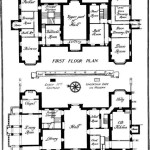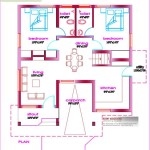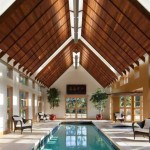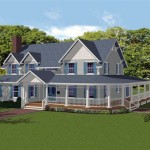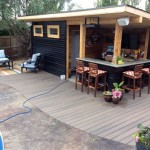Small Cinder Block House Plans: Efficiency and Durability in Compact Living
Cinder block, also known as concrete masonry unit (CMU), has long been recognized as a cost-effective and durable building material. Its inherent strength and resistance to fire, pests, and weather make it an appealing choice for residential construction, particularly for smaller homes seeking both affordability and longevity. Small cinder block house plans cater to individuals and families desiring a practical and manageable living space. These plans prioritize efficient use of space while leveraging the structural benefits of cinder block construction.
Planning a small cinder block house requires careful consideration of various factors, including local building codes, site conditions, and desired aesthetic. The design process must optimize space utilization while integrating essential features like proper insulation, ventilation, and utility access. This article explores key aspects of small cinder block house plans, highlighting their advantages and providing insights into the design and construction considerations.
Understanding the Advantages of Cinder Block Construction for Small Homes
Cinder block construction presents several benefits that are particularly advantageous for small house plans. The material's inherent strength allows for robust structural integrity, making it resistant to damage from wind, earthquakes, and impact. This resilience translates to lower maintenance costs and a longer lifespan for the dwelling.
Fire resistance is another significant advantage. Cinder block acts as a natural fire barrier, significantly slowing the spread of fire and providing valuable time for occupants to evacuate. This added safety feature can also lead to lower insurance premiums.
Cinder block's thermal mass contributes to energy efficiency. The material absorbs and slowly releases heat, helping to regulate indoor temperatures and reduce the need for extensive heating or cooling. While cinder block itself doesn't provide insulation, it creates a stable environment for insulation materials, enhancing their effectiveness. Proper insulation is crucial in cinder block construction to mitigate thermal bridging and maximize energy performance.
From a cost perspective, cinder block is often more affordable than traditional building materials like wood framing or brick. The relatively low cost of materials combined with the potential for simplified construction techniques can significantly reduce the overall project budget. Furthermore, the long-term durability of cinder block minimizes future repair and replacement expenses.
Pest resistance is another key advantage. Cinder block is impervious to termites and other wood-boring insects, eliminating the need for costly pest control measures and preventing structural damage associated with infestations. Its resistance to rot and decay further contributes to the building's longevity.
Key Design Considerations for Small Cinder Block House Plans
Designing a small cinder block house necessitates a strategic approach to space planning. Every square foot must be utilized effectively to maximize functionality and livability. Open floor plans are often employed to create a sense of spaciousness and improve circulation within the limited footprint.
Strategic placement of windows and doors is crucial for natural light and ventilation. Windows should be positioned to capture sunlight during the day, reducing the need for artificial lighting. Careful consideration must be given to window size and orientation to minimize heat gain in warmer climates and maximize solar gain in colder climates. Adequate ventilation is essential for maintaining healthy indoor air quality and preventing moisture buildup.
Proper insulation is paramount in cinder block construction. Insulation can be applied to the interior or exterior of the walls, or the cinder block cores can be filled with insulating material. The choice of insulation method will depend on factors such as climate, budget, and aesthetic preferences. Effective insulation minimizes heat loss in winter and heat gain in summer, reducing energy consumption and improving indoor comfort.
Roof design also plays a significant role in the overall aesthetic and functionality of a small cinder block house. Simple gable roofs or shed roofs are commonly used for their cost-effectiveness and ease of construction. Overhangs can provide shade and protect the walls from the elements. The roofing material should be durable and weather-resistant to ensure long-term protection for the structure.
Foundation design is a critical aspect of any building project, and small cinder block houses are no exception. The foundation must be properly designed to support the weight of the structure and prevent settling. Slab-on-grade foundations, crawl space foundations, or basement foundations are all viable options, depending on site conditions and homeowner preferences. Proper drainage is essential to prevent water damage to the foundation.
Interior finishing is another important consideration. While cinder block can be left exposed for an industrial aesthetic, many homeowners prefer to cover it with drywall, plaster, or other finishes to create a more comfortable and inviting interior. Careful attention should be given to selecting finishes that are durable, easy to maintain, and aesthetically pleasing.
Construction Techniques and Best Practices for Cinder Block Homes
Constructing a small cinder block house requires a thorough understanding of proper masonry techniques and best practices. The foundation must be accurately laid and carefully leveled to provide a solid base for the walls. Mortar joints should be consistently sized and properly filled to ensure structural integrity.
Reinforcing steel is typically used in cinder block construction to enhance its strength and resistance to cracking. Vertical rebar is placed in the cores of the blocks and tied to the foundation, providing additional support. Horizontal rebar can be added to the mortar joints to further strengthen the walls.
Properly staggering the joints between blocks is crucial for creating a strong and stable wall. The blocks should be laid in a running bond pattern, with each block overlapping the blocks below. This pattern distributes the load evenly and prevents weakness along the vertical joints.
Waterproofing is essential to protect cinder block walls from moisture penetration. A waterproof coating can be applied to the exterior of the walls to prevent water from seeping through the block and causing damage. Proper drainage around the foundation is also important for preventing water buildup.
Electrical and plumbing systems must be carefully planned and installed during the construction process. Conduit and pipes should be embedded in the walls or run through the cores of the blocks. Proper sealing around penetrations is essential to prevent air leaks and moisture intrusion.
Adhering to local building codes and regulations is paramount. Building codes specify minimum requirements for structural strength, fire safety, and energy efficiency. Obtaining the necessary permits and inspections ensures that the construction project meets all applicable standards.
The selection of a qualified and experienced contractor is critical for ensuring a successful construction project. A reputable contractor will have the knowledge and expertise to properly execute the design and construction of a small cinder block house. Checking references and reviewing past projects can help homeowners find a contractor they can trust.
Integrating sustainable practices into the construction process can further enhance the benefits of small cinder block house plans. Using recycled materials, minimizing waste, and incorporating energy-efficient features can reduce the environmental impact of the project. Solar panels, rainwater harvesting systems, and other green technologies can further enhance the sustainability of the home.
The long-term performance of a small cinder block house depends on proper maintenance. Regularly inspecting the walls for cracks or damage and addressing any issues promptly can prevent more serious problems from developing. Cleaning the exterior of the walls periodically can help to maintain their appearance. Repainting or resealing the walls as needed can protect them from the elements and prolong their lifespan.
Small cinder block house plans offer a compelling combination of affordability, durability, and energy efficiency. By carefully considering the design factors outlined above and adhering to proper construction techniques, individuals and families can create a comfortable and sustainable living space that meets their needs and budget. The inherent strength and resilience of cinder block construction ensure a long-lasting and low-maintenance home that provides peace of mind for years to come.

Cool Energy Efficient Concrete House Plans Houseplans Blog Com

Concrete House Plans That Provide Great Value And Protection

Cool Energy Efficient Concrete House Plans Houseplans Blog Com

Carroll Cove Saltbox Cabin Home Cinder Block House Country Style Plans
Concrete Block Icf Design Home 1 Bdrm Bath 550 Sq Ft Plan 132 1488

Concrete Block House Plans Smalltowndjs Com Floor Tiny

450 Sq Ft Concrete Block Tiny Home

Prairie School Influence Radford 1909 Cement Houses Model 8216 House Modern Plans Cinder Block

Concrete House Plans Icf And Block Modern Home

Cool Energy Efficient Concrete House Plans Houseplans Blog Com

